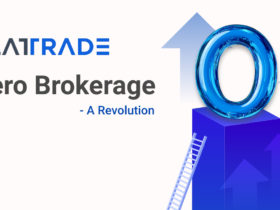The aggregate toll road revenue growth is likely to moderate to 9%-10% in the current fiscal and 8% in the next financial year, after touching a peak of 21.2% in FY23, according to India Ratings and Research’s (Ind-Ra) analysis of its rated portfolio of toll roads. The rating agency further said that it did not expect any impact on the debt servicing capability of the rated entities, as most of the projects benefit from the diversification and pooling of cash under the INVIT structure, as well as adequate liquidity and satisfactory coverage ratios based on the agency’s base case projections.
The rating agency also stated that standalone projects which have lower coverage and limited liquidity buffer could be impacted on account of receding traffic due to the opening up of alternative means of transit. However, those entities bearing a debt service coverage ratio of 1.3x or more and having adequate liquidity shall remain comfortable.
Factors leading to toll revenue growth
The toll road industry witnessed multiple disruptions between FY16 and FY23, due to demonetisation-led cash erosion, goods and service tax implementation, alignment of axle load norms for commercial vehicles in line with global standards and pandemic-related travelling and supply chain disruptions.
Subsequently, toll road revenue rebounded in FY23 and witnessed healthy growth on the back of higher toll rates that is linked to WPI-based inflation, improved economic activity and lower base of FY22. The rating agency said that the traffic recovery was led by the removal of pandemic-induced travel restrictions, revival of economic activity and enhanced work-related and leisure travel.
The toll revenues from April to August of the current fiscal grew more than 10% year-on-year, driven by higher traffic growth on national highways due to completion of capacity augmentation of contiguous stretches, improvement in project level of traffic service, rise in commercial traffic on the lifting of sand mining ban in certain states and continued growth in tourist traffic. Nonetheless, 16% of Ind-Ra rated portfolio faced headwinds in toll revenue as a result of a traffic decline ranging between 5%-20%, majorly due to diversion of traffic to alternate routes which were shorter in distance, resulting in saving of cost and time.
Further, Ind-Ra opined that WPI estimates for December 2023 shall fall to 4%, due to the high base effect, transforming into inflation-linked toll rate escalation of about 4.2% in FY25. Traffic volumes strongly correlate with the gross value added of construction, mining, and manufacturing which is expected to grow by 3.9% in FY24, according to the rating agency.
As majority of the freight traffic depends on these sectors, Ind-Ra expects the traffic growth to stay resilient and taper down to 4-5% YoY in FY24, but will remain higher than the CAGR of 2-3% seen between FY19 and FY23. Traffic growth for specific projects could moderate on the opening of alternative routes and modes of transportation i.e. improvement in alternate routes, greenfield expressways, dedicated freight corridors, and airports among others in FY25.
Outlook for toll road sector
Ind-Ra stated that toll roads operate on high EBITDA margins, typically 80%-90% for national highways, and this implies only 10%-20% of revenue is used to operate and maintain a toll road. Therefore, the moderate volatility in inflation will not impact the debt servicing capability of toll projects and these projects are naturally hedged against inflation as toll revenues (toll rates) are pegged against inflation based on WPI.
However, the rating agency said that medium-term risk includes a weakening of the economic environment that can impact commercial traffic performance, export slowdown in the western economies and declining WPI growth trend.
Furthermore, toll road entities have maintained a robust credit profile in FY23, and this trend is expected to persist into FY24. This is attributed to the fact that a majority of the toll projects rated by Ind-Ra have been shifted to InvITs or are operating under a cash pooling mechanism, effectively mitigating project-specific risks. Consequently, the rating agency anticipates a stable outlook for the sector.





